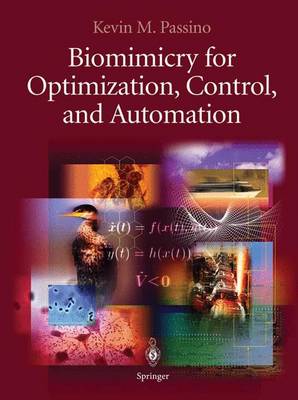Biomimicry uses our scienti?c understanding of biological systems to exploit ideas from nature in order to construct some technology. In this book, we focus onhowtousebiomimicryof the functionaloperationofthe "hardwareandso- ware" of biological systems for the development of optimization algorithms and feedbackcontrolsystemsthatextendourcapabilitiestoimplementsophisticated levels of automation. The primary focus is not on the modeling, emulation, or analysis of some biological system. The focus is on using "bio-inspiration" to inject new ideas, techniques, and perspective into the engineering of complex automation systems. There are many biological processes that, at some level of abstraction, can berepresentedasoptimizationprocesses,manyofwhichhaveasa basicpurpose automatic control, decision making, or automation. For instance, at the level of everyday experience, we can view the actions of a human operator of some process (e. g. , the driver of a car) as being a series of the best choices he or she makes in trying to achieve some goal (staying on the road); emulation of this decision-making process amounts to modeling a type of biological optimization and decision-making process, and implementation of the resulting algorithm results in "human mimicry" for automation. There are clearer examples of - ological optimization processes that are used for control and automation when you consider nonhuman biological or behavioral processes, or the (internal) - ology of the human and not the resulting external behavioral characteristics (like driving a car). For instance, there are homeostasis processes where, for instance, temperature is regulated in the human body.
- ISBN13 9781852338046
- Publish Date 29 September 2004
- Publish Status Active
- Publish Country GB
- Imprint Springer London Ltd
- Edition 2005 ed.
- Format Hardcover
- Pages 926
- Language English
